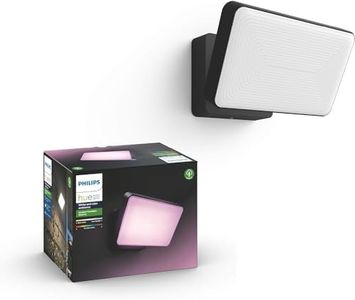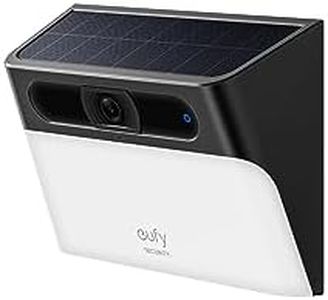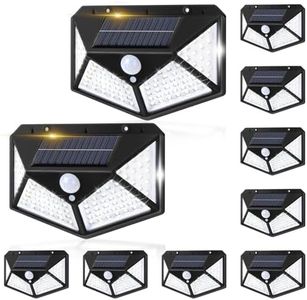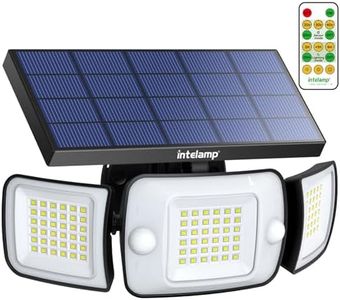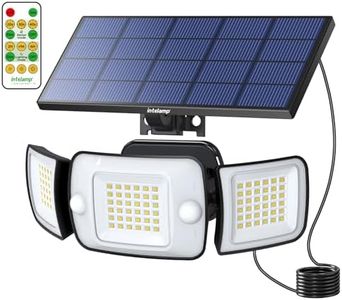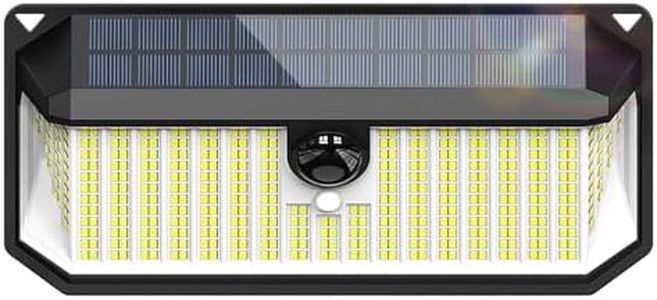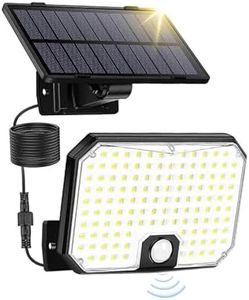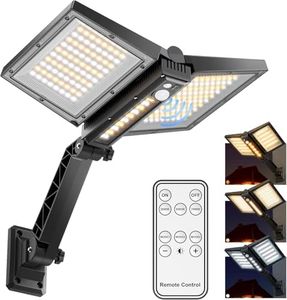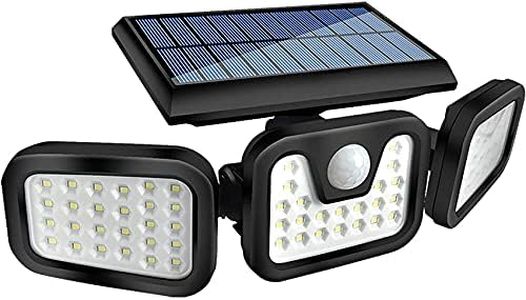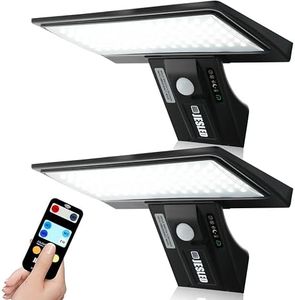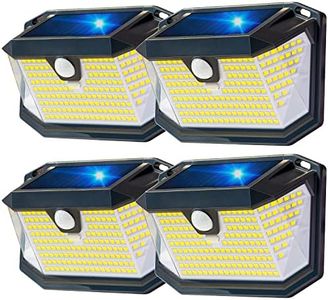We Use CookiesWe use cookies to enhance the security, performance,
functionality and for analytical and promotional activities. By continuing to browse this site you
are agreeing to our privacy policy
10 Best Solar Security Lights
From leading brands and best sellers available on the web.Buying Guide for the Best Solar Security Lights
When looking to buy solar security lights, your goal should be to find a reliable, energy-efficient solution that keeps your outdoor spaces illuminated and secure after dark. The key is to match the light’s features with your home’s security needs, installation preferences, and the specific areas you want to cover. By understanding the different specs, you’ll be better equipped to choose a light that works well in your location and fits your routine.Brightness (Lumens)Brightness, measured in lumens, tells you how much light the fixture will produce. A lower lumen count (up to 300 lumens) is best for gentle lighting around pathways or patios, while a mid-range (300 to 800 lumens) suits most home security needs, lighting up driveways, entrances, or backyard spaces. Higher lumens (over 800) are reserved for wide or particularly dark areas, such as large yards or alleyways, but may be too harsh for small spaces. You should think about the size of the area you want to illuminate and whether you want more ambient or strong security lighting.
Motion Detection Range and AngleMotion detection determines how far and wide the light can sense movement to activate. The range describes how far away motion will trigger the light, usually from 10 to 50 feet, and the angle, often between 90° and 270°, determines how wide an area it covers. Shorter ranges and angles work for smaller doorways and porches, while larger ranges are necessary for driveways or wide-open yards. Pick a detection range and angle that match the space where you'll install the light and consider what paths people normally take, so the light turns on at the right moment.
Solar Panel Efficiency and PositionThe solar panel collects sunlight and converts it into energy to charge the light’s battery. Efficiency refers to how well the panel does this job—higher efficiency means it can charge even on cloudy days or with less direct sunlight. The position is also important; some lights have adjustable panels to tilt toward the sun, while others are fixed. If your installation area receives full sun most of the day, almost any panel works, but for shady or partly sunny spots, opt for higher efficiency or adjustable panels to ensure reliable nighttime lighting.
Battery Capacity and Recharge TimeBattery capacity, often measured in mAh (milliamp hours), controls how long the light can run through the night. A larger battery means longer lighting time but also takes more sunlight to fully charge. Recharge time describes how many hours of sunlight it takes to fill the battery. If you need all-night lighting or live in an area with less sunlight, look for lights with larger batteries and efficient charging, but if the light is mostly for occasional use, a standard battery may be enough.
Weather Resistance (IP Rating)Weather resistance is usually labeled with an IP (Ingress Protection) rating, which shows how well a product withstands dust and water. A rating like IP65 or IP66 means it can handle heavy rain and dust, making it suitable for exposed areas. For locations with minimal rain or some shelter, a lower rating might suffice. Always match the IP rating with your local weather conditions, so you won’t have to worry about durability or functionality in bad weather.
Adjustability and Installation OptionsThis refers to how you can mount the light and aim it where you need. Some lights let you adjust the head and solar panel angle separately, giving more flexibility for placement, while others have fixed designs. If you want to cover an oddly shaped space or need to install the light on a wall, fence, or eaves, look for adjustable mounts and easy installation features. For regular front-door or pathway use, a fixed option may suffice.
